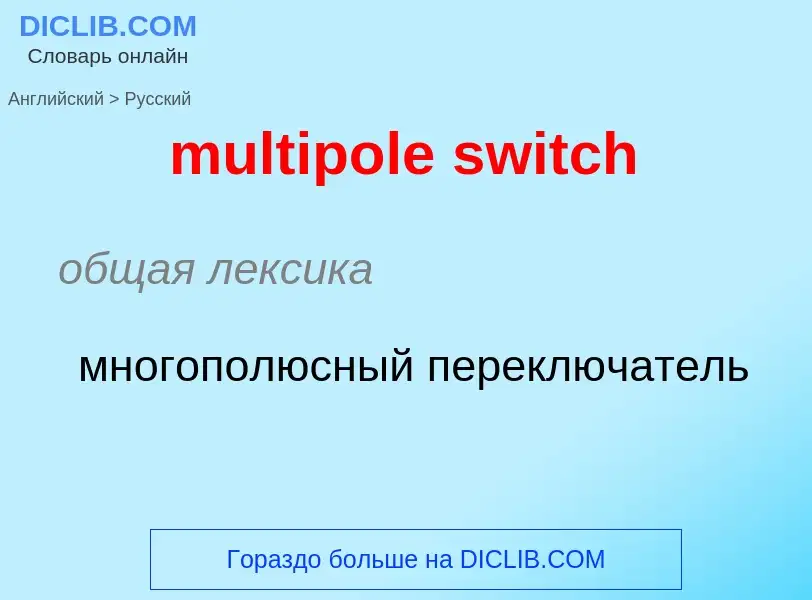Перевод и анализ слов искусственным интеллектом ChatGPT
На этой странице Вы можете получить подробный анализ слова или словосочетания, произведенный с помощью лучшей на сегодняшний день технологии искусственного интеллекта:
- как употребляется слово
- частота употребления
- используется оно чаще в устной или письменной речи
- варианты перевода слова
- примеры употребления (несколько фраз с переводом)
- этимология
multipole switch - перевод на русский
общая лексика
многополюсный переключатель
строительное дело
настенный выключатель
общая лексика
коммутирующий (связной) концентратор
Определение
-разветвлять
и разветвиться-разветвляться. Разветвление реки. Разветвление дороги.
Википедия
A multipole expansion is a mathematical series representing a function that depends on angles—usually the two angles used in the spherical coordinate system (the polar and azimuthal angles) for three-dimensional Euclidean space, . Similarly to Taylor series, multipole expansions are useful because oftentimes only the first few terms are needed to provide a good approximation of the original function. The function being expanded may be real- or complex-valued and is defined either on , or less often on for some other .
Multipole expansions are used frequently in the study of electromagnetic and gravitational fields, where the fields at distant points are given in terms of sources in a small region. The multipole expansion with angles is often combined with an expansion in radius. Such a combination gives an expansion describing a function throughout three-dimensional space.
The multipole expansion is expressed as a sum of terms with progressively finer angular features (moments). The first (the zeroth-order) term is called the monopole moment, the second (the first-order) term is called the dipole moment, the third (the second-order) the quadrupole moment, the fourth (third-order) term is called the octupole moment, and so on. Given the limitation of Greek numeral prefixes, terms of higher order are conventionally named by adding "-pole" to the number of poles—e.g., 32-pole (rarely dotriacontapole or triacontadipole) and 64-pole (rarely tetrahexacontapole or hexacontatetrapole). A multipole moment usually involves powers (or inverse powers) of the distance to the origin, as well as some angular dependence.
In principle, a multipole expansion provides an exact description of the potential, and generally converges under two conditions: (1) if the sources (e.g. charges) are localized close to the origin and the point at which the potential is observed is far from the origin; or (2) the reverse, i.e., if the sources are located far from the origin and the potential is observed close to the origin. In the first (more common) case, the coefficients of the series expansion are called exterior multipole moments or simply multipole moments whereas, in the second case, they are called interior multipole moments.














![Category 6]] [[patch cable]]s (all equipment is installed in a standard 19-inch rack) Category 6]] [[patch cable]]s (all equipment is installed in a standard 19-inch rack)](https://commons.wikimedia.org/wiki/Special:FilePath/19-inch rackmount Ethernet switches and patch panels.jpg?width=200)
![ERS 2550T-PWR]], a 50-port [[Ethernet]] switch ERS 2550T-PWR]], a 50-port [[Ethernet]] switch](https://commons.wikimedia.org/wiki/Special:FilePath/2550T-PWR-Front.jpg?width=200)


